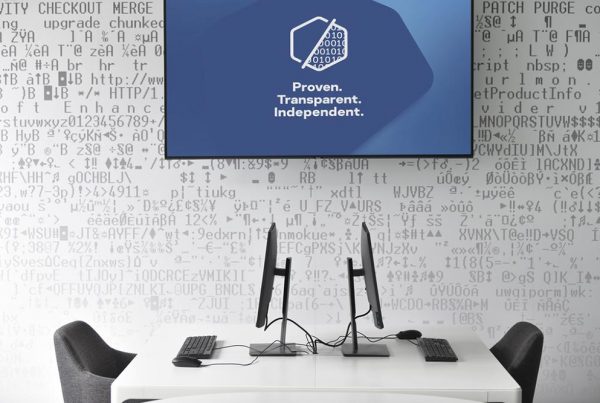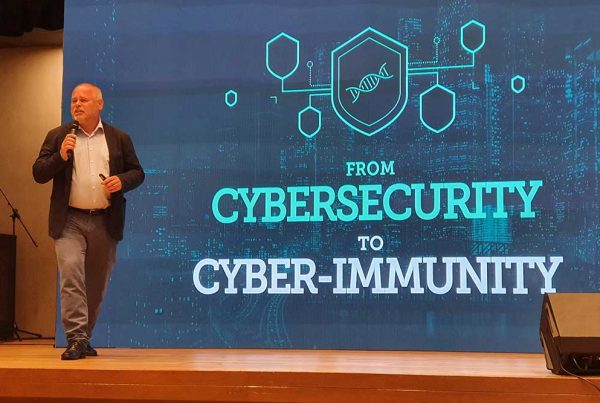
Image: SMART Technologies.
There is no doubt that collaboration tools based on touch displays can generate a high ROI compared to non-interactive displays. To select the right solution, I have compiled some guidance in regards to the relevant criteria. There are three groups of criteria that companies should look at.
Features & Functionality
• Resolution. The actual display should support UHD (4K) resolution. Most new content and graphic cards are increasingly ultra HD, which helps to ensure a future-proof solution.
• Anti-glare. The display surface should be anti-glare, as glossy surfaces are tiring for the eyes.
• Mobile connectivity. It should be possible to wirelessly connect a smartphone or tablet to the display. This way, digital whiteboard pages can be directly saved to the personal device without the need to attach a PC.
• Software integration. When attaching a PC, it should be possible to natively ink into standard documents like PowerPoint, Word and Excel. It means that the digital ink becomes part of the document, and can be saved as part of it.
Robustness & Reliability
• No remote control. Avoid displays that require a remote control to turn the system on. All too often, the controls are lost or the batteries die, both of which can be show-stoppers.
• Passive pens. The pens for writing and sketching with digital ink shouldn’t require batteries or mechanical parts neither. This helps ensure that they always work as expected and don’t break when they accidentally fall down.
• Closed system. When talking about the embedded intelligence (also called “system on a chip”), it should be a closed system so that users can’t install software or misconfigure it accidentally.
Simplicity & Natural User Experience
• Object Awareness. Current systems can detect the difference between a finger, a pen and the palm of your hand so that the digital tool used (pen, mouse/touch, eraser) can be switched automatically without clicking any icon or button. This is extremely intuitive, as the display “behaves” like a real whiteboard.
• Colored pens. When the IFP pens themselves are colored like real whiteboard and flipchart pens, usage gets a lot more intuitive as you don’t need floating software toolbars or color wheels.
• Presence Detection. An intelligent display should “light up” automatically with built-in presence detection. We call this “walk-up-and-use” functionality – just like you have when you want to write on a traditional dry-erase board or flipchart.
• Surface coating. The surface coating of the touch display is also a critical factor. It should minimize friction for an optimized touch experience. Stay away from non-coated (glossy) panel glass, as this tends to cause “finger-burn” when gesturing or dragging elements on the screen.
• System updates. Updates to the embedded system shouldn’t require IT staff running around with USB keys. Modern systems allow wireless updates right from your mobile device.
When considering these criteria, you will get a relevant shortlist of products. The most important aspect is a natural user experience. If it simply feels natural to work with the product, adoption will be high. And adoption is the core requirement to achieve the desired ROI. A different product that seems to be cheaper, but just collects dust once installed, would be a waste of money when looking at its ROI for your company.
Tobias Windbrake works as Collaboration Consultant in the EMEA & APAC region. He joined SMART seven years ago, initially managing SMART’s training business. Based on this experience, he strongly believes in ease-of-use and simplicity as an essential factor for technology adoption – the core requirement for ROI. Tobias holds a Master’s degree in Computer Science, and was running his own software company before joining SMART.
ABOUT SMART TECHNOLOGIES
SMART Technologies is a leading provider of technology solutions that enable inspired collaboration in schools and workplaces around the world by turning group work into a highly interactive, engaging and productive experience. SMART delivers an integrated solution of hardware, software and services designed for superior performance and ease of use, and remains a world leader in interactive displays. Specialties include – Interactive Whiteboards, Interactive Displays, Student Response System, Wireless Slates, Interactive Learning Software, Document Cameras, Collaboration, Interactive Projectors.
Transforming how people work and learn, worldwide.
• 3 million classrooms worldwide
• 5 million software downloads annually
• 200 Fortune 1000 customers
• 300,000 SMART lab users
• 100% year-over-year revenue growth in interactive displays
• Working in partnership with Free the Children






